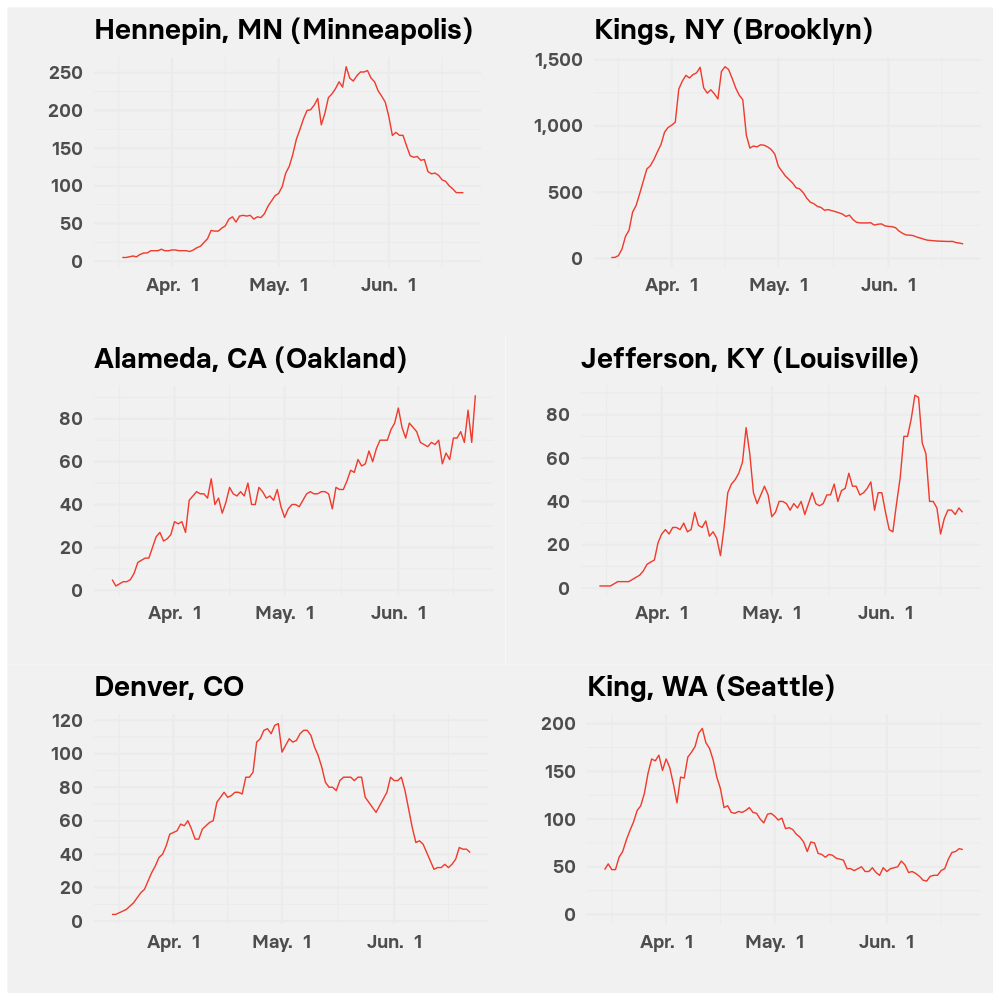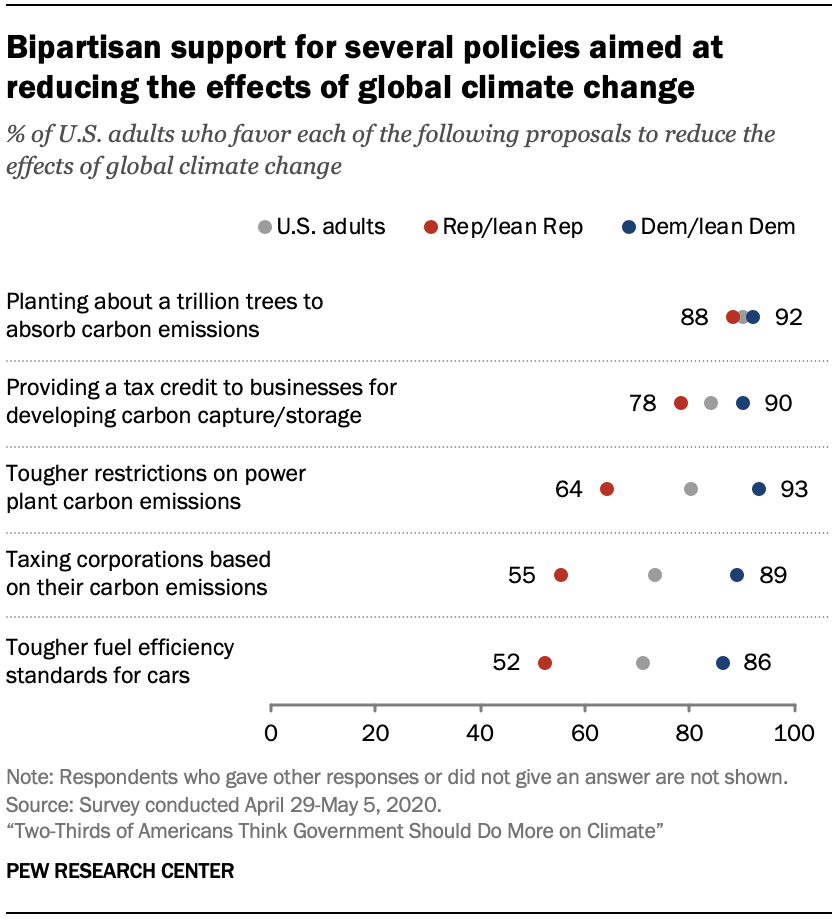
A couple of years ago this was Apple’s fastest chip; what’s coming in a couple of years in its laptops? CC-licensed photo by Paul Hudson on Flickr.
You can sign up to receive each day’s Start Up post by email. You’ll need to click a confirmation link, so no spam.
A selection of 11 links for you. All in a row. I’m @charlesarthur on Twitter. Observations and links welcome.
How Facebook wrote its rules to accommodate Trump • The Washington Post
Elizabeth Dwoskin, Craig Timberg and Tony Romm:
»
Outrage over the [December 2015 Trump campaign video calling for a ban on all Muslims entering the US] led to a companywide town hall, in which employees decried the video as hate speech, in violation of the company’s policies. And in meetings about the issue, senior leaders and policy experts overwhelmingly said they felt that the video was hate speech, according to three former employees, who spoke on the condition of anonymity for fear of retribution. Zuckerberg expressed in meetings that he was personally disgusted by it and wanted it removed, the people said. Some of these details were previously reported.
At one of the meetings, Monika Bickert, Facebook’s vice president for policy, drafted a document to address the video and shared it with leaders including Zuckerberg’s top deputy COO Sheryl Sandberg and Vice President of Global Policy Joel Kaplan, the company’s most prominent Republican.
The document, which is previously unreported and obtained by The Post, weighed four options. They included removing the post for hate speech violations, making a one-time exception for it, creating a broad exemption for political discourse and even weakening the company’s community guidelines for everyone, allowing comments such as “No blacks allowed” and “Get the gays out of San Francisco.”
Facebook spokesman Tucker Bounds said the latter option was never seriously considered.
The document also listed possible “PR Risks” for each. For example, lowering the standards overall would raise questions such as, “Would Facebook have provided a platform for Hitler?” Bickert wrote. A carveout for political speech across the board, on the other hand, risked opening the floodgates for even more hateful “copycat” comments.
Ultimately, Zuckerberg was talked out of his desire to remove the post in part by Kaplan, according to the people. Instead, the executives created an allowance that newsworthy political discourse would be taken into account when making decisions about whether posts violated community guidelines.
That allowance was not formally written into the policies, even though it informed ad hoc decision-making about political speech for the next several years, according to the people. When a formal newsworthiness policy was announced in October 2016, in a blog post by Kaplan, the company did not discuss Trump’s role in shaping it.
«
Isn’t it amazing how every time something controversial involving a right-winger on Facebook comes up, Kaplan is there saying not to act on it? Every. Single. Time.
unique link to this extract
Reddit shuts down r/The_Donald after years of problems with racism, anti-Semitism and conspiracy theories • The Washington Post
Craig Timberg and Elizabeth Dwoskin:
»
Reddit shut down its popular but controversial forum devoted to supporting President Trump on Monday, following years in which the social media company tried but often failed to control the racism, misogyny, anti-Semitism, glorification of violence and conspiracy theories that flourished there.
The move against r/The_Donald, as the forum was known, came after its volunteer moderators and much of the community had left in recent months, moving to a website that mimics Reddit’s system of conversation and user voting on content but appears to have fewer rules. It is just one of several alternative social media sites, such as Gab and Parler, that have emerged in recent years, portraying themselves as freewheeling alternatives to more mainstream platforms.
The move by Reddit comes amid a broader crackdown by technology companies, including Twitter and Facebook, to try to rein in hateful, deceptive and other problematic content on their platforms, typically after high-profile scandals prompted action. Reddit also implemented its first policy banning hate speech on Monday and closed about 2,000 individual forums, what the company calls “subreddits.” The company already had a policy against “divisive language” in advertising.
Most of the closed subreddits already had become dormant while others, like r/The_Donald, had histories of policy violations. Reddit also closed the left-wing r/ChapoTrapHouse on Monday for violating platform rules.
«
Facebook’s “reining in” looks rather different from that of all the others, as already noted. Though this is really not much of a move, if it was already a ghost town. Though “2,000 others”? That’s a lot.
unique link to this extract
Apple Silicon – first impressions • DIGITS to DOLLARS
Jonathan Goldberg:
»
Reading between the lines, they seem to be targeting desktop performance with highly improved power budgets. This is important because they could have done the inverse and built a very different product. This implies some incredibly powerful laptops, as opposed to ultra-long battery life on lighter devices. Which is interesting because that latter use case is an iPad, as most people use it today, which runs on a different branch of their chip family tree. Our interpretation of this is that they have built an incredibly flexible architecture that lets them assemble chip pieces like Lego bricks. This has big implications for the broader industry, which we will return to in tomorrow’s post.
«
I think this post is actually the more interesting one, since it makes a prediction about the forthcoming laptops. It’ll be comparatively easy to create laptops with the same external shape but more power: add more cores, clock the CPU a little faster. Apple has so much potential here.
unique link to this extract
2020 iPhones won’t come with a power adapter or earbuds, says Kuo • The Verge
Sam Byford:
»
This year’s new iPhones might not have as much in the box as you’re used to. According to well-connected analyst Ming-chi Kuo, Apple is planning to stop including a power adapter and EarPods in the box with 2020 models, and will even remove the power adapter from the new iPhone SE’s packaging later this year. Kuo’s research note was reported on by AppleInsider, MacRumors, and 9to5Mac.
Apple is attempting to offset the cost increases that come with upgrading the iPhone range to 5G, according to Kuo. Smaller packaging would be more eco-friendly and also reduce shipping costs, since more phones could fit into a single shipment. (Encouraging more sales of AirPods can’t hurt, either.)
Right now Apple includes EarPods with all iPhones, a 5W USB-A adapter with the 11 and SE, and an 18W USB-C adapter with the 11 Pro and 11 Pro Max. Last year’s inclusion of the 18W charger came after years of widespread complaints regarding the slow 5W adapter, so it would be surprising to see it disappear so quickly. It’s not clear, however, whether that will be the case across the whole iPhone line.
«
I don’t think anyone would miss the adapter or the earbuds. If there’s a home that doesn’t have at least one spare set of each, I’d like to know about it. And when people upgrade, they… already have those things. Less electrical waste, too. Though this also tells us that, as expected, Apple isn’t going to get rid of the Lightning connector.
unique link to this extract
Apple just crippled IDFA, sending an $80bn industry into upheaval • Forbes
John Koetsier:
»
Yesterday Apple killed the IDFA without killing the IDFA, by taking it out of the depths of the Settings app where almost no-one could find it — although increasingly people were finding it and turning it off — and making it explicitly opt-in for every single app. If an app wants to use the IDFA, iOS 14 will present mobile users with a big scary dialog [“This app would like permission to track you across apps and websites owned by other companies. Your data will be used to deliver personalised ads to you. Allow/Ask Not To Track”]
Would you say “yes” to allowing an app or brand permission to “track you across apps and websites owned by other companies?” Neither will 99% of consumers.
This is actually a genius move by Apple. Marketers can’t really get upset about losing the IDFA capability, because technically it’s still around. Apple gets to burnish its privacy credentials while not taking huge amounts of flack from brands and advertisers because, after all, who can argue with giving people more rights with their personal data?
And make no mistake: this is a great move for user privacy. But it’s also a huge problem for a massive industry.
«
The problem for the advertisers is that they won’t be able to track people, and measure the effects of their ads. Though that probably helps Facebook and Google, as ever.
unique link to this extract
A Better World
“Fibretigre”:
»
The dates you can change are in yellow.
The dates you just changed are in pink.
Click on one of them to change the past!
«
It’s a fun game. I managed to wipe out Europe with my first one. It’s like that SF short story, “A Sound of Thunder.” (That link’s probably not legit.) (Via Sophie Warnes.)
unique link to this extract
This coronavirus mutation has taken over the world. Scientists are trying to understand why • The Washington Post
Sarah Kaplan and Joel Achenbach:
»
When the first coronavirus cases in Chicago appeared in January, they bore the same genetic signatures as a germ that emerged in China weeks before.
But as Egon Ozer, an infectious-disease specialist at the Northwestern University Feinberg School of Medicine, examined the genetic structure of virus samples from local patients, he noticed something different.
A change in the virus was appearing again and again. This mutation, associated with outbreaks in Europe and New York, eventually took over the city. By May, it was found in 95% of all the genomes Ozer sequenced.
At a glance, the mutation seemed trivial. About 1,300 amino acids serve as building blocks for a protein on the surface of the virus. In the mutant virus, the genetic instructions for just one of those amino acids — number 614 — switched in the new variant from a “D” (shorthand for aspartic acid) to a “G” (short for glycine).
But the location was significant, because the switch occurred in the part of the genome that codes for the all-important “spike protein” — the protruding structure that gives the coronavirus its crownlike profile and allows it to enter human cells the way a burglar picks a lock.
And its ubiquity is undeniable. Of the approximately 50,000 genomes of the new virus that researchers worldwide have uploaded to a shared database, about 70% carry the mutation, officially designated D614G but known more familiarly to scientists as “G.”
«
Lab experiments suggest the mutation makes it more infectious. Or it might be an accident of sampling. (I’d go with infectivity. Evolution’s a hard taskmaster, and viruses evolve.)
unique link to this extract
Coronavirus brings American decline out in the open • Bloomberg Opinion
Noah Smith:
»
In addition to worrying about their jobs and livelihoods, Americans must now be subjected to months of images of Italians casually walking around on the streets while they cower in their houses. It’s a painful and stark demonstration of national decline. Even more galling, the U.S.’s Covid failure means that its citizens can no longer travel freely around the world; even Europe plans to impose a travel ban on Americans.
But the consequences of U.S. decline will far outlast coronavirus. With its high housing costs, poor infrastructure and transit, endemic gun violence, police brutality and bitter political and racial divisions, the U.S. will be a less appealing place for high-skilled workers to live. That means companies will find other countries in Europe, Asia and elsewhere a more attractive destination for investment, robbing the U.S. of jobs, depressing wages and draining away the local spending that powers the service economy. That in turn will exacerbate some of the worst trends of U.S. decline – less tax money means even more urban decay as infrastructure, education and social-welfare programs are forced to make big cuts. Anti-immigration policies will throw away the country’s most important source of skilled labor and weaken a university system already under tremendous pressure from state budget cuts.
Almost every systematic economic advantage possessed by the U.S. is under threat. Unless there’s a huge push to turn things around – to bring back immigrants, sustain research universities, make housing cheaper, lower infrastructure costs, reform the police and restore competence to the civil service – the result could be decades of stagnating or even declining living standards.
«
Or, you know, elect a competent president. That would be a start.
unique link to this extract
The eye of the storm • The Critic Magazine
Marie Le Conte made a comment on Twitter which blew up. So now she’d become “the person everyone’s talking about on Twitter”, which is not who you ever want to be:
»
By the time I was in the pub after work, my Twitter app had become unusable; by the time I met up with two colleagues for dinner, I’d deleted the tweet in a panic. As often happens with anxiety-inducing memories, I remember little from that evening. We were at Bocca Di Lupo and my two companions were trying to discuss the project we’d been working on, but I kept glancing in panic at my phone.
It’s hard to describe what it feels like, being the main character on Twitter. People tweet at you, at first to criticise what you said, then insulting you for what you said, then trying to find other things you said to criticise and insult you for, then moving on to discussing your appearance, what you may be like in bed, and anything else they can think of. They also tweet about you, which is more disconcerting if you aren’t a celebrity, which I am not. They are no longer talking to you but about you to each other; it’s a book club and you’re the book.
At least a book is self-contained; when you become the main character, people take the dots that they have, link them up, then add some new ones where they think they should be and at the end of it there is a person they can attack, but only a small part of that person is you. It was decided I was a frustrated and uptight straight woman; I am bisexual. It was decreed that I was a racist white woman; I am mixed-race.
«
It’s a wonderful piece. “It’s a book club and you’re the book, and nobody wants to hear from the book.”
unique link to this extract
Guy who reverse-engineered TikTok reveals the scary things he learned, advises people to stay away from it • Bored Panda
:
»
2 months ago, Reddit user bangorlol made a comment in a discussion about TikTok. Bangorlol claimed to have successfully reverse-engineered it and shared what he learned about the Chinese video-sharing social networking service. Basically, he strongly recommended that people never use the app again, warning about its intrusive user tracking and other issues. Considering that TikTok was the 4th most popular free iPhone app download in 2019, this is quite alarming.
«
It’s a long thread, because as he describes it “it’s a data-collection service thinly veiled as a social network”. Though isn’t what they all are? There’s some more disturbing stuff too.
This isn’t verified by anyone else, yet, but I wouldn’t expect that to take too long.
unique link to this extract
A tech company spied on police brutality protesters • Buzzfeed News
Caroline Haskins:
»
On the weekend of May 29, thousands of people marched, sang, grieved, and chanted, demanding an end to police brutality and the defunding of police departments in the aftermath of the police killings of George Floyd and Breonna Taylor. They marched en masse in cities like Minneapolis, New York, Los Angeles, and Atlanta, empowered by their number and the assumed anonymity of the crowd. And they did so completely unaware that a tech company was using location data harvested from their cellphones to predict their race, age, and gender and where they lived.
Just over two weeks later, that company, Mobilewalla, released a report titled “George Floyd Protester Demographics: Insights Across 4 Major US Cities.” In 60 pie charts, the document details what percentage of protesters the company believes were male or female, young adult (18–34); middle-aged 35º54, or older (55+); and “African-American,” “Caucasian/Others,” “Hispanic,” or “Asian-American.”
“African American males made up the majority of protesters in the four observed cities vs. females,” Mobilewalla claimed. “Men vs. women in Atlanta (61% vs. 39%), in Los Angeles (65% vs. 35%), in Minneapolis (54% vs. 46%) and in New York (59% vs. 41%).” The company analyzed data from 16,902 devices at protests — including exactly 8,152 devices in New York, 4,527 in Los Angeles, 2,357 in Minneapolis, and 1,866 in Atlanta.
Sen. Elizabeth Warren told BuzzFeed News that Mobilewalla’s report was alarming, and an example of the consequences of the lack of regulation on data brokers in the US.
“This report shows that an enormous number of Americans – probably without even knowing it – are handing over their full location history to shady location data brokers with zero restrictions on what companies can do with it,” Warren said.
«
Half of me would love to know how this cross-matched with people who then developed Covid-19, and half of me knows this is already an incredible privacy invasion. (Separate data shows that protests haven’t increased Covid cases. But reopening close-contact areas such as restaurants and shops has.)
unique link to this extract
Errata, corrigenda and ai no corrida: none notified














